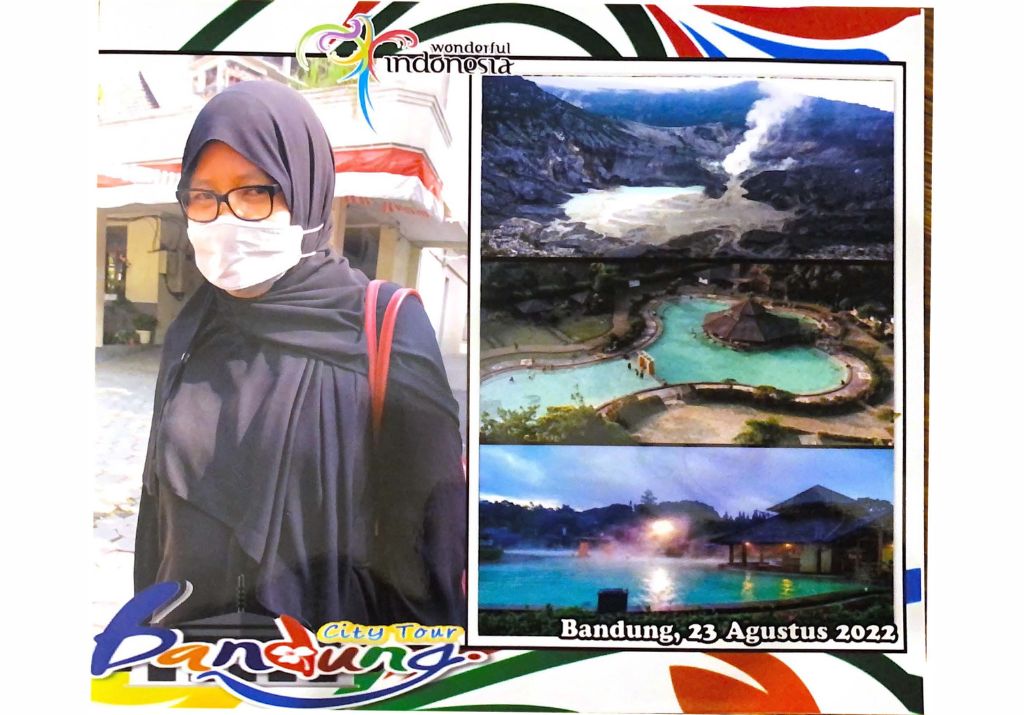By Aida Mokhtar
Often we are told, we should teach our children to have grit with some even mentioning that grit is more important than IQ as it spurs us to do things with great courage and resilience. What is grit?
Grit denotes firmness of mind or spirit: unyielding courage in the face of hardship or danger, according to the online Merriam Webster dictionary.
A recent holiday in Bandung, Indonesia, made me experience the amalgamation of grit and marketing communication in its practical form that went beyond the theory in textbooks.
As a marketing communication lecturer, I was observant to how marketing communication efforts were carried out in Bandung especially as shopping was one of the main items on our itinerary with Pasar Besar and factory outlets such as Rumah Mode and Heritage to name a few that are characteristic of the shopping scene.
What caught my eye was not the advertisements on television or at the shopping outlets in particular but how a man who took photos of me outside our hotel later identified me in one of the factory outlets and pursued me relentlessly to sell my photo.
The experience of having my photos taken outside my hotel gave me some insight as to how the paparazzi would behave with celebrities. The Bandung photographer suddenly popped out of nowhere as I was walking in the premise of the factory outlet and persuaded me to purchase my photos and photos of my family members and even agreed to accept my purchases in the Malaysian currency; not once but many, many times.
The photos were not the best one of me, I must admit, because one was taken with me wearing a mask combined with a startled look in my eyes and another one with my son. Startled by the commotion of several men peddling their wares outside the hotel.
Nevertheless, the photos saw me perfectly posing for the camera before I climbed into our van to get to our next destination. I ultimately purchased the photos from him not because they were pretty, they were certainly identifiable of me but certainly not pretty; I later gave in to the relentless persuasion that was happening because of several reasons.
The determination, grit and resilience that resonated through the photographer cum salesperson could be seen through his efforts in pursuing me. These were the values that caught my eye more than the printed photos themselves.
Upon hindsight, perhaps it was also depicting the metaphor of thinking outside the box or thinking creatively in marketing communication.
Thinking outside the box originated from J. P. Guilford, a psychologist, who, in the early 1970s, was one of the first academic researchers to carry out a research study of creativity, mentioned Boyd in the article, Thinking Outside the Box: A Misguided Idea.
Guilford’s famous study was of a nine-dot puzzle that required one to connect all the dots using four straight lines without lifting one’s pencil off the page that encouraged the technique of looking beyond the boundaries of the imaginary square created by the dots.
Although the article dispelled the notion of linking outside-the-box thinking and creativity through another research study that proved that not all participants could think outside the box despite being told to do so prior to another connect the dots activity.
Another question would also be whether there was a box in the first place that somehow limits our thinking process. But then there is also the divergent thinking or lateral thinking process that espouses the art of generating creative ideas by investigating several possible creative solutions.
It appears like the effort of exploring possibilities by fusing different fragments of ideas to create novel ideas makes us step beyond the parameters.
Nevertheless, thinking outside the box aptly describes the photographer’s strategy of identifying the tourist market, their penchant for photos and then meeting their want by providing printed photos that record personal memories of Bandung coupled with scenes of Bandung as a souvenir to take home albeit without their prior request.
My daughter gave me a questioning look as to why I purchased the photos from the man. I told her we were earning and were having stable incomes and so I can afford to purchase them, but this poor man most likely had a family to feed, and an uncertain income source as reflected through his grit which was inevitable to have for his and his family’s survival thus spurring me to make my purchase.
It was my way of helping him out in other words. At least he was not begging. The image of the romantic figure of the photographer cum salesperson akin to the hero of his family could be painted in this regard and here I was reinforcing this.
The theory of marketing communication teaches us of the importance of profiling the demographics and psychographics of target audiences before strategizing a campaign plan. This brings me to ponder on the reasons why people purchase products?
The reasons could be to fulfil needs and wants that could be as a source of comfort such as in the case of comfort food through the consumption of cake and junk food, to support the needy, to support persons with disabilities, to support black-owned businesses as found in the US, to support good causes such as Toms’ shoes one-for-one business model launched in 2006 that involves a pair of shoes given away to the needy for every pair purchased.
We also reminisce through movies like Death of a Salesman (1985) and The Pursuit of Happyness (2006) and how these movies reflect the art of selling to earn and get out of poverty as key motives. Not all movies have happy endings as one of these movies underscore.
Willy Loman, the protagonist in Death of a Salesman, was a salesperson with a distorted view of the American Dream who thought by being well-liked, having connections and ambition would enable him to make it big in sales; his demotion from being a salaried worker to a commission salesperson was a major blow and his earnings were too small and could hardly pay his bills leading him to commit suicide so that his family could benefit from his insurance.

It was a tragic movie based on a play by Arthur Miller. This movie contrasted with The Pursuit of Happyness that was more uplifting as it was based on a true rags to riches story of a single father Chris Gardner who at the beginning was selling bone-density scanners but could not earn enough to pay bills, was faced then with a failed marriage, became homeless but then managed to work himself upwards after pursuing unpaid internship at the prestigious stock brokerage firm, Dean Witter Reynolds and working hard at it to win the single paid position.

From these movies we learn that poverty can be detrimental or an uplifting motivator for both salespersons. Survival of the fittest, diligence, grit and adapting well to the situation are essential ingredients for the success of a salesperson as depicted by The Pursuit of Happyness. The ultimate happiness of the family was also central to the life of both men.
The Bandung salesperson projected grit and diligence by doing something that he felt he was good at by offering a photography service that was removed from the normal way of providing the service by waiting for customers to request for these services first.
It appears to be characteristic of a person who practices the metaphor thinking outside the box in the novel way he identified markets and offered his services to customers relentlessly.
About the writer

Dr. Aida Mokhtar is an Associate Professor at the Department of Communication, AbdulHamid AbuSulayman Kulliyyah of Islamic Revealed Knowledge and Human Sciences (AHAS KIRKHS), at the International Islamic University Malaysia (IIUM). She is also currently the Coordinator of the IIUM Disability Services Unit (DSU), Office of Deputy Rector (Student Development and Community Engagement). She obtained her PhD in Advertising from the University of Stirling, United Kingdom. Her research interests are Islamic advertising, advertising regulations, integrated marketing communication and social communication. She has published extensively in these areas.
MARKETING Magazine is not responsible for the content of external sites.









